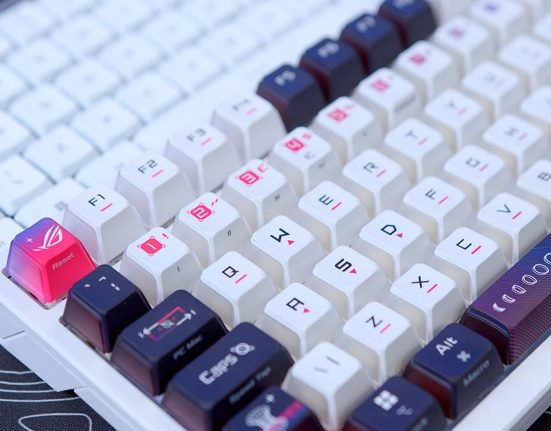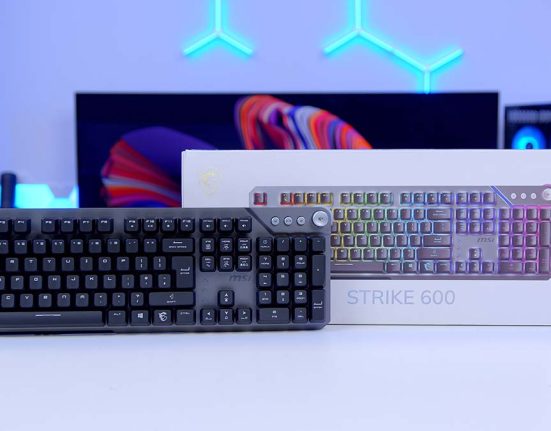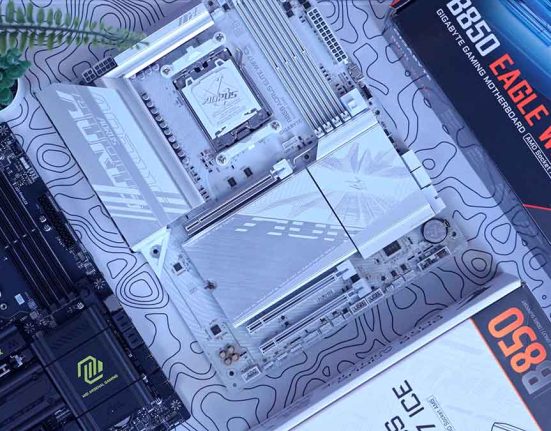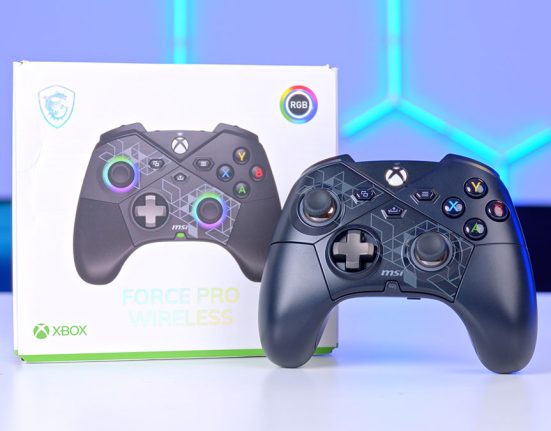The MSI STRIKE PRO Wireless is a silent mechanical keyboard designed to offer versatility through tri-mode connectivity, seamless customisation, and a range of onboard controls while offering a near-silent typing experience. The MSI STRIKE PRO has come a long way since the Strike 600, with many new features for gamers and typists to explore.
However, the mechanical keyboard market is an incredibly competitive space. With more manufacturers throwing their hat into the ring, offering features or design qualities that will make a keyboard stand out from the rest is becoming increasingly challenging. Silent switches and tri-mode connectivity aren’t anything new. So the STRIKE PRO Wireless may need an ace up its sleeve to become one of our go-to recommendations, so we’ve put the MSI STRIKE PRO Wireless through a gauntlet of testing and analysis to determine if it’s a mechanical keyboard worth buying.
In this article, we’ll examine the MSI STRIKE PRO Wireless in detail, analysing its specs, design, building quality, typing experience, and features to determine whether it’s a worthwhile option compared to similar keyboards on the market.
Specification
The MSI STRIKE PRO Wireless is a full-size keyboard with a dedicated numpad, consisting of 105 keys. While full-size keyboards offer the most keys compared to TKL, 75%, and other smaller form factors, their size can be an encumbrance. For example, the STRIKE PRO Wireless is 443mm wide, about 130mm wider than the LoFree Flow, a 75% keyboard. Full-size keyboards dwarf smaller keyboards in comparison, which may be a problem for those with limited desk space.
The STRIKE PRO Wireless uses a PBT Dye-Sublimate keycap material. Dye-sub keycaps differ slightly from Double-Shot PBT and are designed to preserve the legend while offering vibrant and long-lasting colours. These keycaps are quite resistant to wear and tear, and they remain bright even after prolonged usage. They use a Cherry-style stem and can be entirely swapped out for alternative keycaps if you’d prefer a different design.

Instead of manufacturing their own switches, MSI has opted to use Kailh Midnight Pro Silent switches. We’ve seen MSI use Kailh switches on some of their older keyboards like the GK50 Elite, so it’s no surprise to see more premium Kailh switches pop up here. The PCB of the STRIKE PRO Wireless is fully hot-swappable and uses 5-pin sockets. Again, swapping them out is relatively straightforward if you’re not a massive fan of the base switches.
This keyboard offers full N-Key rollover support with 100% anti-ghosting. This means every key will respond exactly in the order you’ve pressed it, significantly minimising misinputs. Each key is also addressable, allowing you to reconfigure them to your liking, including the RGB lighting.
| Specifications | MSI STRIKE PRO Wireless |
|---|---|
| Size | Full-Size (105 Keys) |
| Keycap Material | Dye-Sub PBT |
| Switches | Kailh Midnight Pro Silent Tactile |
| Hot-Swappable | Yes (5-Pin) |
| Key Rollover | Full-Key Rollover, 100% Anti-Ghosting |
| Macro Keys | All Keys Fully Programmable |
| Connectivity | Wired, 2.4GHz, Bluetooth |
| Report Rate | N/A |
| RGB | Yes |
The STRIKE PRO Wireless offers three connectivity options. The wired mode performs the strongest and has the lowest latency. If you prefer a wireless connection or need something more portable, the 2.4GHz and Bluetooth connectivity will serve you well.
Regarding pricing, the STRIKE PRO Wireless has an MSRP of $169.99. This isn’t entirely outlandish considering what this keyboard offers. As a point of comparison, the LoFree Flow is $159.99, and you’re getting a similar set of features, bar the size. MSI could be slightly more price-competitive, reducing the price by $20 would align it much closer with other mid-range keyboards on the market.
MSI STRIKE PRO Wireless Design
The STRIKE PRO Wireless is a fairly basic-looking keyboard in terms of design. The entire outer chassis is made of black plastic (presumably ABS), while the top plate is a grey metal. Apart from the small section above the arrow keys that houses the MSI logo text, not much of the top plate is visible. I appreciate that MSI has opted for a metal top plate, as this adds a more premium look and feel to the overall aesthetic, while also providing extra rigidity and stability.

On the underside of the STRIKE PRO Wireless are two rubberised feet to prevent the keyboard from moving, and a pair of kickstands with two settings. The kickstands feel firm, and I have no concerns that they’d break or become damaged even with extensive usage.

Unfortunately, there’s not much else to cover regarding the chassis or anything external to the central portion of the keyboard. The main keyboard features 105 keys, with a dedicated numpad located on the right side, positioned just below the media/brightness control dial. MSI has gone the extra length to ensure there’s RGB visible on pretty much every area of the STRIKE PRO, including the RGB dial, connectivity switch keys, and macro keys.

The connectivity buttons allow you to switch between 2.4GHz and Bluetooth, enabling you to connect to multiple devices at once. Three dedicated keys beneath this will also allow you to switch between Bluetooth profiles, making it easy to access other computers or even your phone with the click of a button.

At the top right, you’ll find a dedicated dial, button and set of media controls. The media controls are pretty self-explanatory, but the function of the button and dial is twofold. The button allows you to change the functionality of the dial, which changes between volume and brightness, and the dial then lets you adjust your PC volume or keyboard brightness.

At the top left are three macro buttons that trigger macro profiles that you can set up within the Mystic Light application. I couldn’t get Mystic Light working, which we’ll discuss in more detail later, so I couldn’t test the functionality of the macro keys.

The last area to cover is the wrist rest. I’m a big fan of an integrated wrist rest, and MSI has provided a nice pleather rest that magnetises to the keyboard. It cushions the wrists nicely, and there’s minimal movement once it’s connected up to the bottom of the keyboard, which can often be an issue with wrist rests that don’t have any way of attaching to the keyboard chassis.

Keycaps and Switches
The STRIKE PRO Wireless has a rather unconventional set of keycaps. Instead of using what I thought would be Double-Shot PBT, these are, in fact, Dye-Sub PBT. Dye-Sub and Double-Shot are similar in terms of their resistance to wear and shine, but Dye-Sub is generally a cheaper process and doesn’t allow RGB to shine through. Some gamers will prefer Dye-Sub, but personally, for a keyboard this expensive, I would have expected Double-Shot PBT. Double-Shot is sharper-looking and incredibly resistant, and it allows RGB to shine through the legend.

Despite my opinion, these Dye-Sub keycaps have been produced to a high level. The legend on each key looks crisp and clear, the edges on the keycaps feel nice and smooth, and there are no rough ridges or misaligned keys. The profile is a standard Cherry, which is fine and suits the preferences of most people. If you’ve got some alternatives to hand with a Cherry stem, you can still change them out for keycaps that you prefer.
Switches
The switches that come with the STRIKE PRO Wireless are Kailh Midnight Pros, specifically the Tactile variant. I’m in two minds about the switches. On the one hand, the dampening inside the keyboard and the switches themselves make typing incredibly quiet. I’m not a massive fan of Tactile switches, but as Tactile switches go, these feel pretty nice.
On the other hand, as soon as I started typing on the STRIKE PRO Wireless, I was instantly reminded of an old-school Dell membrane keyboard. The gram-force requirement to get the Tactile bump to actuate reminds me of the clunky nature of these switches. I don’t think this is what MSI intended for the STRIKE PRO Wireless, but the result is that it makes the overall experience feel a bit cheap. I appreciate that MSI has gone out of its way to minimise noise levels. Still, I think it would have been a better decision to use linear switches or tactile switches with a much weaker actuation for the bump, such as Akko V3 Cream Blue Pros or Cherry Speed Copper switches.

That said, there are some other advantages worth talking about. I like that MSI has continued to use Kailh. Their switches are highly reputable and well-recognised within the mechanical keyboard space. It’s also great that MSI hasn’t gone for a proprietary design. One thing that disappoints me with some keyboards is that they use proprietary optical switches, which are practically impossible to use as hot-swap options. Or the magnetic switches that allow you to customise the actuation in software, again, nearly impossible to hotswap.
Overall, in my experience with the MSI STRIKE PRO Wireless, it’s not the best keyboard for typing or gaming, but it’s not the worst either. It sits in that middle-of-the-road point where I think you’ll get a mixed bag of gamers that like and dislike the typing feel and experience.
Features We Like
Low Noise Levels
If MSI have gotten anything right with this keyboard, I’d say the sound dampening is superb. MSI claims to use multi-layered foam, gasket plate mounting, and additional dampening to minimise pings and echoes across the chassis. The noise levels from typing on this keyboard are very quiet and highly impressive.

Magnetic Wrist Rest
One feature I appreciate on premium keyboards is an included wrist rest. There are far too many keyboards over the $150 mark that don’t come with any support or cushioning for your wrists. However, MSI has gone against the curve and provided a full pleather wrist rest that magnetises to the bottom of the keyboard.

Features We Don’t Like
Doesn’t Like USB 2.0 Over 2.4GHz
As part of the wireless options, you can connect the STRIKE PRO Wireless via 2.4GHz. This can be done by plugging in the 2.4GHz USB dongle and then setting the keyboard to this wireless mode by pushing the 2.4GHz button. However, I quickly discovered that it doesn’t like USB 2.0 ports. This may be a struggle if you’ve got a low-end motherboard, which may limit your wireless connectivity options.

Conclusion
MSI STRIKE PRO Wireless
Product Name: STRIKE PRO Wireless
Brand: MSI
-
Features
-
Design
-
Versatility
-
Value For Money
Summary
After testing the STRIKE PRO Wireless for a few days, two questions remain. Is this MSI’s strongest entrant in the mechanical keyboard market? Or does it struggle to offer unique features at a competitive price point? Unfortunately, the STRIKE PRO Wireless sits in the latter category. This is a keyboard that I want to love, but its lack of interesting features, fairly boring design and somewhat cheap typing experience doesn’t make it stand out. There are some decent qualities, such as tri-mode connectivity, an integrated wrist rest, and internal sound dampening. Still, nothing about the features or design of this keyboard makes me go “Wow! This is a great keyboard”.
Furthermore, its relatively expensive price point and software issues hinder the STRIKE PRO Wireless. At $169.99, the STRIKE PRO Wireless is putting itself on par with keyboards like the LoFree Flow, ROG Falchion RX Low Profile, and the NuPhy Field75, all of which I would argue offer unique qualities that make them better than the STRIKE PRO in terms of value proposition. And the fact that I couldn’t get the software to work further compounded my disappointment. In summary, the STRIKE PRO Wireless isn’t the worst mechanical keyboard on the market, but it certainly isn’t the best. With some price drops down to the $100-$120 mark, this mechanical keyboard is one we’d be more inclined to recommend. However, at its current price point, with the features on offer, we recommend considering alternatives.
Pros
✅ Included wrist rest
✅ Low noise levels while typing
✅ Minimal latency over wireless
Cons
❌ Software issues
❌ Doesn’t like USB 2.0 in 2.4GHz
❌ Feels like a membrane keyboard


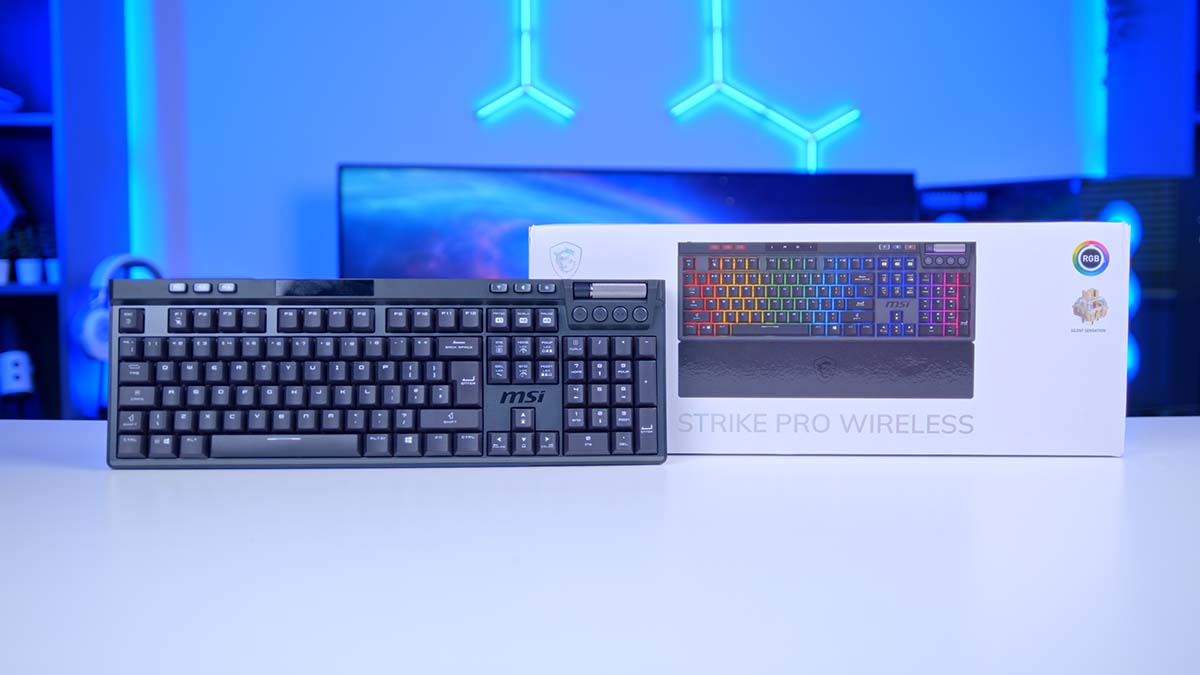

![FI_[DP051] Antec C5 + 5070Ti Gaming PC Build](https://geekawhat.com/wp-content/uploads/2025/11/FI_DP051-Antec-C5-5070Ti-Gaming-PC-Build-551x431.jpg)
